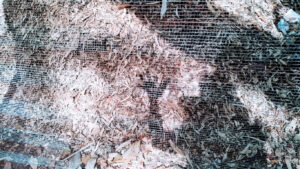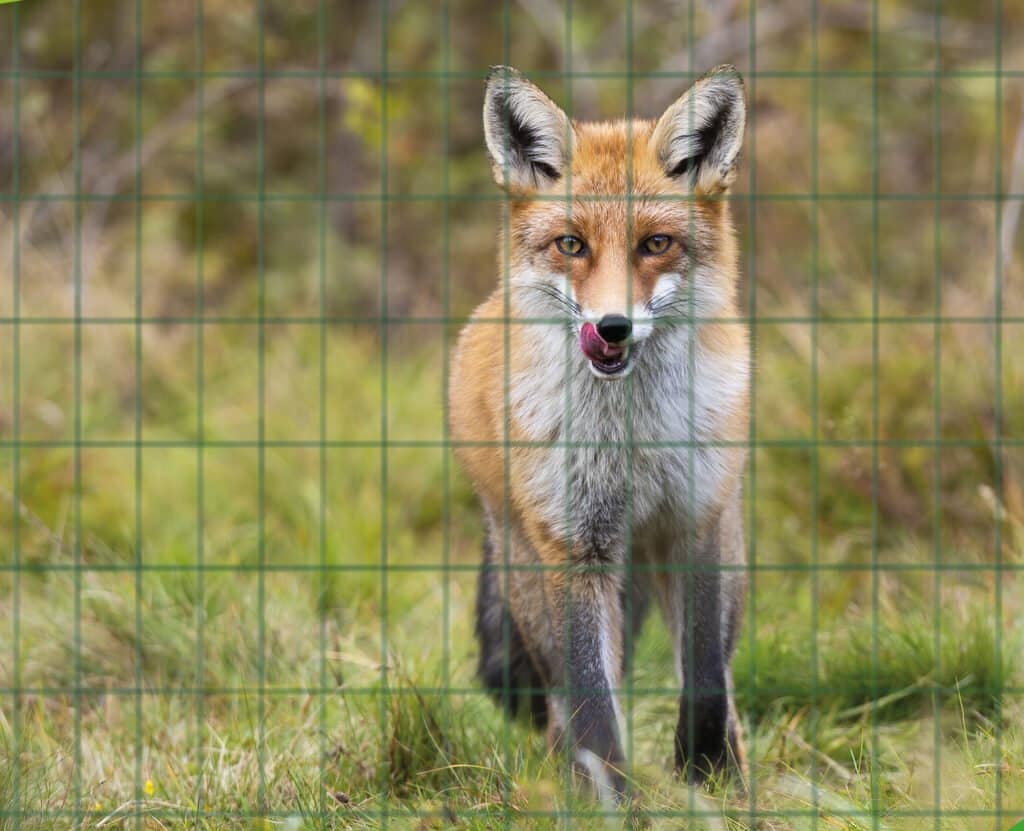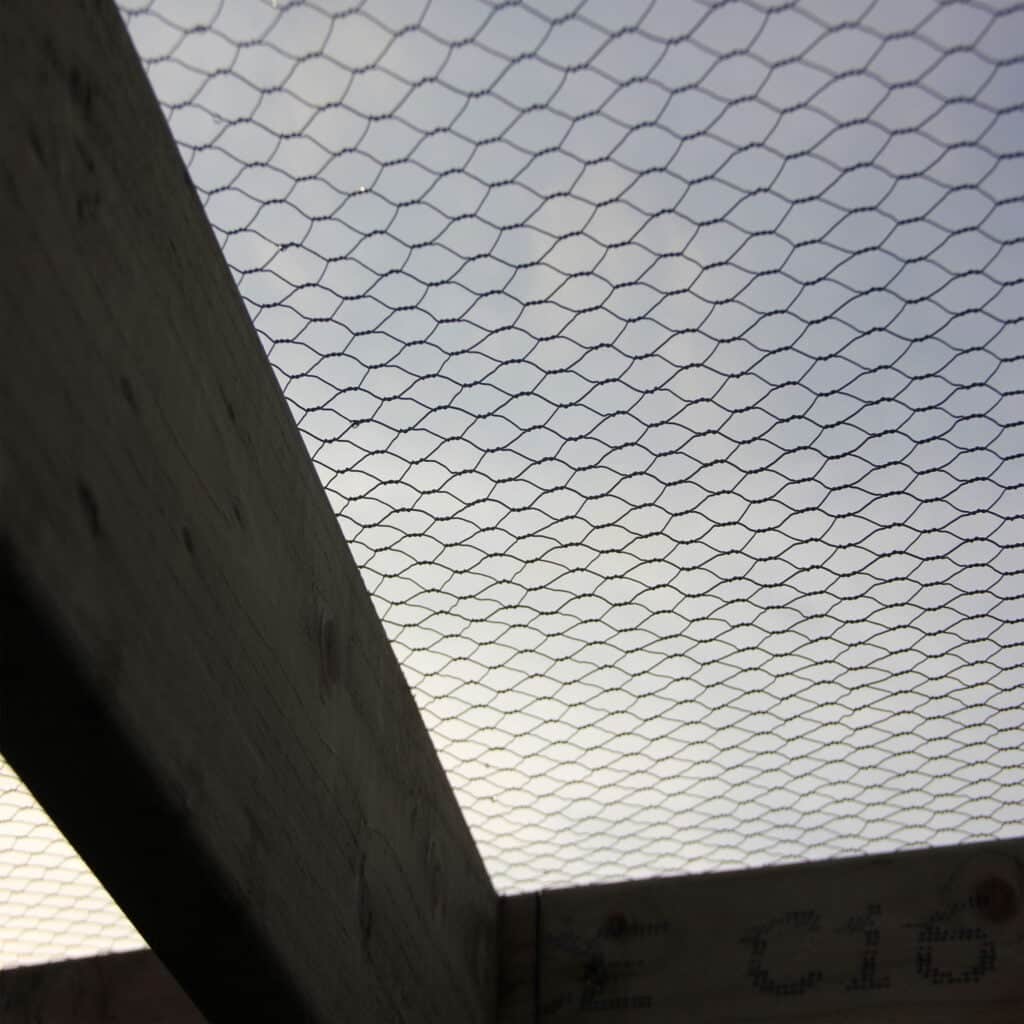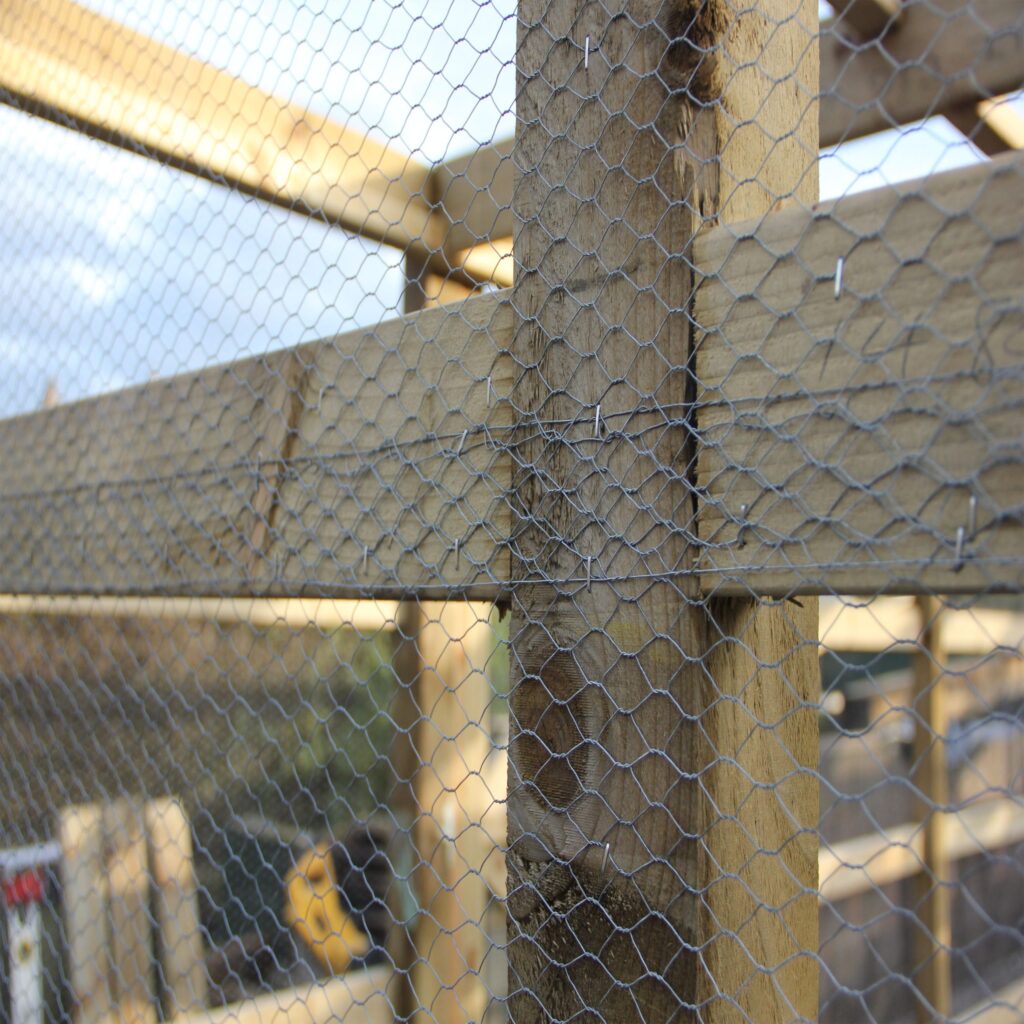









Many of our wire mesh products can be used to deter foxes from your property.
Chicken wire works well. The smaller the hole and the thicker the wire the better.
Green wire fencing can be used to block foxes, but it may not be strong enough to prevent them from digging under the fence or jumping over it, especially if the fence is low. To effectively block foxes, a sturdy fence with a minimum height of 6 feet and a buried barrier at least 12 inches deep should be considered.

Foxes are opportunistic animals, and their wants and needs can vary depending on the environment and their individual circumstances. However, some of the basic things that foxes need to survive include:
Foxes are adaptable and can survive in a wide range of environments, so their specific wants and needs will vary depending on where they live.
Foxes are known to attack and kill chickens, especially if the chickens are kept in an unprotected or poorly secured coop or pen. Foxes are opportunistic predators and will take advantage of easy prey, such as chickens, if given the opportunity. Foxes are also able to dig under fences or jump over low barriers to gain access to chicken coops. To protect chickens from foxes, it’s important to have a secure coop and pen with a sturdy fence buried underground to prevent digging, and also to have a roof on the coop to prevent jumping. It’s also important to not leave chickens outside overnight, as foxes are more active during the night.
Fox mesh can be an effective way to protect chickens from foxes, but it is not the only option. Fox mesh is a type of wire mesh that is specifically designed to keep foxes out of an area, and it can be used to secure the perimeter of a chicken coop or pen. However, there are other methods that can also be used to protect chicken runs from foxes, such as:
It’s important to remember that foxes are very adaptable animals and they can find ways to overcome many obstacles, so it’s important to use multiple methods to protect chickens.
Cutting fox proof mesh can be challenging, as the wire is typically made from strong and durable materials such as galvanized steel or stainless steel. The best way to cut it would be to use heavy-duty cutting tools such as bolt cutters, wire cutters, or wire snips. These tools are specifically designed to cut through thick wire and can make the cutting process much easier.
It’s important to take safety precautions when cutting fox proof mesh, as the sharp edges of the wire can cause injury. Always wear gloves and protective goggles, and be mindful of your surroundings to avoid accidentally cutting yourself or others.
If you’re cutting a large section of fox proof mesh, it’s often more efficient to use a power tool such as a metal cutting saw or grinder. These tools can make quick work of cutting through the wire, but they can be dangerous if not used properly.
It’s also important to note that cutting the mesh will compromise its strength and integrity, and might not be as effective in keeping foxes out after cutting it. It’s better to plan ahead and buy the right size of mesh for your needs.

Installing fox proof wire mesh to keep foxes out of a specific area can be done in a few simple steps:
It’s important to keep in mind that fox proof fencing is not a one-size-fits-all solution and it might not be effective in all cases, depending on the specific location and the type of foxes. Consult with wildlife expert or animal control specialist for more specific and effective solution for the area you want to protect.
The lifespan of fox proof chicken wire mesh depends on a variety of factors, including the quality of the mesh, the type of environment it is in, and how well it is maintained. In general, high-quality fox proof mesh can last for several years, but it may need to be replaced sooner if it becomes damaged or worn. To ensure that the mesh lasts as long as possible, it should be properly installed and maintained, such as checking for holes or damage and repairing or replacing it as necessary.
As always, thank you for checking out our blog. We hope that this helps you with your project.
Our goal for our blogs and help guides is to answer as many questions as possible to help to explain the possibilities of mesh to our customers. Contact our team today if you have any questions at all. We are always really keen to help in any way that we can.
The largest range of wire mesh, chicken wire, wire fencing, woven wire mesh and perforated metal products in Europe, delivered direct from our Warrington warehouse.




Website by: Beech Web Services | Terms and Conditions | Cookie Policy | Privacy Policy | Website Terms and Conditions